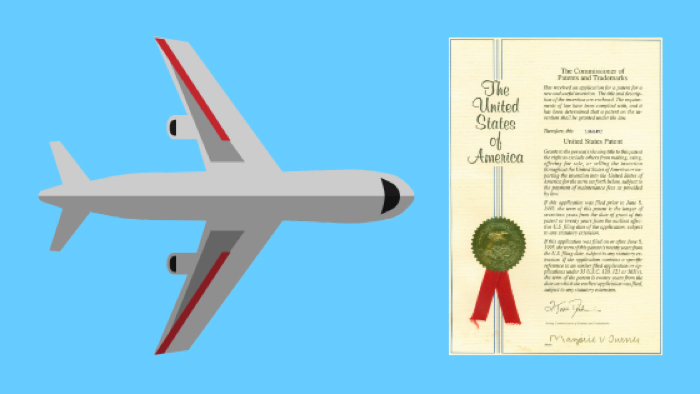
December 12, 2018
Much like in any other industry, aerospace companies develop products, materials, and technologies that need protection from infringement. Intellectual property protection in aerospace also provides a method for innovators to ensure that their developments can remain competitive. Moreover, IP protection leads to profitable business results and increases the potential for innovation.
Patents play an especially important role in the aerospace industry for three main reasons. First, aerospace has a vast amount of safety requirements and regulations that patented technologies and innovations must comply with. Second, the industry is booming and is protected to grow even more. Third, there are so many patents to go around, making the the industry ripe for innovation.
The major manufacturers in the aerospace and defense industries have amassed a total of 29,139 patents, with 29,215 pending patent applications. The key markets are the USA and Europe. The main technology areas within the realm of aerospace are electric digital data processing, airplanes, helicopters and radio waves. The top companies in this industry are Boening, Raytheon, and Lockheed Martin. The three most valuable aerospace patents are: (1) Switched beam antenna architecture, (2) Plasma reactor to accommodate RF power changes or wafer temperature changes, and (3) Composite materials with blend of thermoplastic particles.
More so than in other sectors, innovators in the aerospace industry must keep extra considerations in mind about safety. Safety requirements in the aerospace industry are vigorous, especially when it comes to products that will directly affect consumers’ safety (ie commercial airplanes).
While it may seem that these requirements may stifle innovation, they actually have the opposite effect. The vigorous set of regulations in the industry creates somewhat of a fence. This gives inventors well-defined limits for them to learn what specific area space they can and should invent in. Innovators can more easily pinpoint a starting place for their innovations.
For example, says JD Houvener, CEO of Bold IP, “there are a host of possibilities for new integrations and modifications to the interiors of a commercial aircrafts. Airlines are revamping their Wifi, communications, and software solutions to allow internet access to passengers while meeting safety regulations. Every possible change to a structural element needs to pass rigorous testing as well- ie tray table, seat, and overhead bin designs are tested close to half a million times. For an innovator, once these designs come within the necessary requirements, patents should be their next step towards commercialization.
The industry is booming and is rapidly increasing in demand. A growing industry that is already so large, and that is projected to grow even more, is ripe for monetization.
Even small improvements can make a big dent in the industry and bring a large amount of financial benefit to an innovator. Aerospace is one of the top industries where this growth factor rings especially true.
In bringing an aerospace product to market, having patent protection right away is very important. Inventors should conduct a patentability search or analysis right away to determine if their idea is novel, useful, and non-obvious.
Unlike in many industries where there is strict competition for limited resources, there are plenty of patents to go around in aerospace. Most are in propulsion, jet engine technology, and product design- however, the possibilities are vast.
The Invention Secrecy Act of 1951 allows the government to impose secrecy orders on patent applications that contain sensitive information that could be a concern to national security. This often happens in the aerospace industry. These secrecy orders restrict disclosure of the patent claim invention by withholding the grant of a patent. This requirement of secrecy can be imposed even when the application contains an invention or an idea by a private individual or company who has no government sponsorship or ties.
A secrecy order may be given to an aerospace invention for a few reasons. First, the innovation might be a threat to national security and it is in the public interest for the details not to be disclosed. Second, the government may already be working on the same or a similar item and they would like exclusivity on the item. Third, the government may see your invention and want a head start on it in the interest of national security.
 About the Author
About the Author
Carly Klein is a law student at Loyola Law School in Los Angeles. A graduate from Boston University with a B.A. in Political Science & Philosophy, she has previously served an Americorps term at the American Red Cross in Los Angeles on the Service to the Armed Forces & International Services Team.
Contact:
https://www.linkedin.com/in/carly-klein-26262751/
cklein15@lls.edu
Scott Ellyson, CEO of East West Manufacturing, brings decades of global manufacturing and supply chain leadership to the conversation. In this episode, he shares practical insights on scaling operations, navigating complexity, and building resilient manufacturing networks in an increasingly connected world.